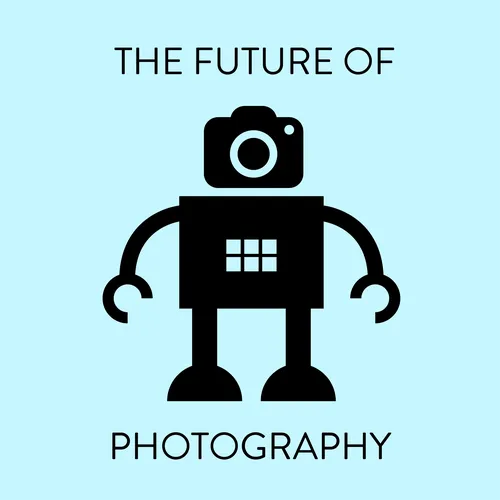
The Future of Photography
Exploring the the way new technology can help you make fantastic photos
- Update frequency
- every 7 days
- Average duration
- 39 minutes
- Episodes
- 359
- Years Active
- 2017 - 2025

017 Photo Enhancements using AI
Increasing resolution of existing photos has traditionally been done by a combination of extrapolation of the existing images, followed by some form of more-or-less smart sharpening. The Max Planck I…

016 Mobile Mini Me
What if I want to climb a mountain to take photos or videos? What if I am a keen cyclist? What if I am a scuba diver?Traditionally I needed bespoke kit but now technology is helping us out. Do I stil…

015 Light Field Photography
Lightfield photography (aka plenoptic photography) enables photographers to computationally re-focus their images and create different perspectives. We explore the history and future of Lytro and wha…

014 Baking the Cake: Photo Integration
I want... all my images on all my devices, all edits sync'd, cloud backup, publishing, automatic keywording and a yacht. OK, maybe the yacht is out of scope but the rest is largely available in vario…

013 KodakCoin
Did the Kodak Coin announcement confuse you? Kodak (actually one of their licensing partners) wants to put the entire photography business on a blockchain. On this episode we try to make sense of thi…

012 Personal Drones
At the family holiday festivities, Ade saw kids as young as 8 get drones as presents. "Holy Flying Menace, Batman" he thought to himself. He quickly ran to safety and started researching the mainstre…

011 Unsupervised Image-to-Image Translation Networks
Chris and Ade explore some new research that just came out of Nvidia, a manufacturer of graphics and machine learning hardware. In the future it will be possible to translate a winter image into a su…

010 Philosophy of Computational Photography
This week Ade and Chris try to leave the science behind and talk philosophy. They almost manage it, but not quite. There is an amusing interlude while we try to imagine what art critics think and the…

009 L16
Happy New Year! The L16 is an interesting beast. 16 cameras and some computational photography make this a brick-shaped camera that is hard to ignore. Chris and Ade bring you some first-hand experien…

008 Glitch Art
Glitch art is the practice of using digital or analog errors for aesthetic purposes by either corrupting digital data or physically manipulating electronic devices. It has a long history in movies, m…

007 An Observation by Adam Savage
Adam Savage (of Mythbusters fame) makes an interesting observation: lately the cameras that people bring to his live show's meet-and-greets have changed: where people used to bring phones, many of th…

006 Lots of Pixels
For years, we have observed and participated in the megapixel race. Pretty much all photographers have an opinion on this. So do Chris and Ade :-) So how do all these pixels impact our images? Are th…

005 Flat Lenses
Today's lenses are made of solid glass. This makes bigger lenses heavy and bulky. While fresnel lenses have managed to make lenses flatter by splitting them up in concentric circles of lens segments,…

004b Boy or Girl? Help Us Name Our Robot And WIN!
OH NO. Our robot has no name. What an inexcusable oversight of us.
Help us give it (him? her?) a name for a chance to win a t-shirt with ... you guessed it ... our robot on it.

004 Animating Images
In the last few years we have seen many approaches to animating photos. Not video as such, more visual effects for impact and fun. Right now it is getting easier all the time. Chris and Ade discuss h…

003 Computational Zoom
What if one photo could contain multiple focal lengths and treat the magnification of background and foreground in a fundamentally different way? Researchers at the UCSB (the University of California…

002 Depth
Are you deep? Depth has many meanings in photography. Specifically for computational photography it can involve calculating depth, blurring, focus stacking and more. Chris and Ade discuss all these t…

001 Thoughts on Computational Photography
So what exactly is computational photography? Chris and Ade discuss a range of examples including panoramas, HDR and lens correction. Do they nail the jelly to the wall? Not completely but it’s fun t…

000 The Inaugural Episode
Did you hear the one about the new podcast? Well this is it. Chris and Ade met, talked and found an enormous new area to podcast about. The Future of Photography includes computational photography, i…